You can see what's different about New York's Chinatown from a few facts:
The shops have had a facelift: To be sure, the traditional crafts and dry goods shops which double as homes with the owner himself (or herself) sitting behind an ornate desk watching the store and chatting with the customers--are still there. But on some of the larger thoroughfares, large-scale shopping centers similar to supermarkets are appearing one by one, and business is booming.
Elaborately decorated restaurants with waitresses in exquisite dress have also arrived. And the cuisine is no longer just traditional Cantonese fare; not only is there Szechuanese and Hunanese cooking, even Peking duck and Shanghai delicacies have piled in, and a few other places appeal with seafood. The old image of Chinatown restaurants as having low prices, no service to speak of, and less than ideal hygiene has already changed somewhat.
Different "races" of Chinese are now on the scene: Although the primary dialect is still Cantonese, the composition of people is very complex. Those from mainland China come not just from the Kwangtung region, but also from Szechuan, Hunan, or Shanghai; besides these there are also Chinese from Vietnam, Laos, Cambodia, Southeast Asia, and even Latin America.
For this long closed-door, self-sufficient district which already has more than 100 years of history behind it, these changes have extraordinary significance.
Traces of Old Chinatown: The Chinatown on the Lower East Side is one of the very few Chinatowns in the world to have taken shape after the middle 19th century. Its rise, prosperity, and recent modifications have all been closely connected to the history of Sino-American relations.
After the Exclusion Act was passed in 1882, Chinese miners in the American West, suffering from white unwillingness to employ them, turned to railway construction, and eventually followed the Iron Horse east to New York. According to records of the time, there were only one or two hundred Chinese people in New York in 1850. But by 1896, when Li Hung-chang passed through New York on the way to attend the coronation of Nicholas of Russia, and Chinese dangled flags of welcome from their homes, the Chinese district was already one of more than 10,000 persons.
You can still see the traces of history in the Lower East Side. For example, because of the Exclusion Act, before 1943 it was impossible for Chinese women to come to the U.S., so the coffee shops and bars of Chinatown were set up especially to meet the needs of single men, with high stools surrounding long bars, without any consideration given to the needs of a family unit; these are still one of the sights of Chinatown to this day.
The "Post Office Stores" which evolved in that time of low literacy rates--wre everybody would go to post letters or exchange money, giving them over to a literate Chinese middleman to mail back to the old country--still exist as well. Many Chinese novels and films, including Eat a Bowl of Tea and Dim Sum, have weaved complex and moving tales using this place as a backdrop.
Before the Facelift: Chinatown's prosperity originated in the 1960's. In 1965, after new immigration laws were passed in the U.S., the quota for Chinese immigration to the U.S. increased to 20,000 people per year. Moreover, it became possible to bring family members to the U.S. under the rubric of "family reunification," causing the population of Chinese to grow rapidly. But it was not this dramatic increase in Chinese per se that produced change in the Lower East Side, but rather their wives.
The State University of New York's Peter Kwong points out in his book The New Chinatown that at that time many older skilled and experienced Italian and East European women were retiring from New York's clothing industry, and Chinese women, diligent and eager to learn, were right there to take their places. According to statistics of the International Women's Garment Makers' Union, the number of women working in clothing factories on the Lower East Side rose in the 1960's from 8,000 to 20,000.
The garment industry also grew. In 1960, there were only six Chinese garment factories in Chinatown, but by 1974 there were 209.
The entry of Chinese women into the labor market caused a structural change in the community. Because they were busy working, with a decrease in time devoted to cooking and housework, Chinese restaurants flourished. Restaurants which originally catered to the tastes of non-Chinese Americans changed somewhat, making "taking-home" convenient.
A Vertical Division of Labor: However, the prosperity of Chinatown restaurants is not due entirely to "our own people." Because there are many employment opportunities in the greater New York area, according to statistics of the U.S. Naturalization and Immigration Service, the population of people of Chinese descent in the greater NY area has already reached 76,000. When these people miss home or want to eat their fill, they come to where Chinese restaurants are concentrated. These suburban Chinese-Americans have also contributed to the prosperity of restaurants on the Lower East Side.
From the 1960s to the 1970s, because the foundations of the two main Chinatown economic pillars--garment making and restaurants--have stabilized, Chinatown businesses have all grown.
For example, the food used in the Chinatown restaurants is all supplied by Chinese wholesalers from Chinese-owned farms in New Jersey. Tofu and soy products, noodles, and won-ton wrapping are produced by local Chinese soy and noodle processing plants. And the construction, decoration, signs, and internal fittings, menus, ovens, utensils . . . everything is manufactured and supplied by Chinese factories.
The same goes for ready-made clothes. Chinatown has some retail shops specially selling needlework and parts, and there are also ready-made clothing wholesalers who are responsible for sales.
By the 1980s, besides professions related to restaurants and clothing, you could also see a variety of industries meeting the needs of Chinese: taxis, drivers' education, travel agencies; as well as vendors selling stereos, TVs, watches, jewellery, leather, and other consumer products; plus businesses which specially appeal to the entertainment Chinese like best, including movie theaters and video rental shops.
The rise of these fields has caused layers, travel agents, and tax accountants to be increasingly popular. Indeed, because Chinese now have some savings, even stock and investment counselors, real estate agents, and doctors have appeared in large numbers.
A Miniature China: Not only Chinatown Chinese, but all Chinese in the New York metropolitan area rely heavily on the Chinatown area. Jennie Tong, president of the Lee, Liu & Tong's Advertising Inc., who immigrated from Hong Kong quite some time ago, takes her mother as an example. Although she doesn't live on the Lower East Side, every week she goes down there two or three times to go shopping, find an accountant to pay taxes, go to religious services, see the dentist, catch a play, see a movie or go to the bank. "Mainly it's because she could find friends here, but she still has many friends living there," says Jennie Tong.
In New York, examples like Jennie Tong's mom are by no means small in number. It is the first stop in America for many Chinese, who wait until they earn enough money or find another way to make a living, then leave Chinatown in a hurry. According to the same 1980 survey, residents of Chinatown who have been in the country less than five years account for 1/4 of all Chinatown inhabitants.
Also because of this, Chinatown is the other extreme of the idea of the Chinese as a "model minority": a group with relatively low socio-economic status. According to the 1980 census, 54% of Chinatown residents are unable to speak English fluently.
Chinatown thus forms a small Chinese world independent of the American community. However, powerful external forces are making it impossible for Chinatown not to change. This includes a larger wave of immigration.
The Fluctuating Housing Market: In 1979, the U.S. formally established diplomatic relations with mainland China. The annual quota for Chinese immigration was raised to 40,000 (20,000 each for the mainland and for Taiwan, Hongkong, and other areas), and immigration from mainland China has flooded in, causing explosive growth in the Chinatown population. According to the Chinatown Planning Commission, the Chinese population in that district has already reached 110,000.
But what has really started to produce a "qualitative change" in Chinatown has been the wave of Hong Kong immigrants and corporations which have come to America to escape 1997.
In the 1980's, when brand spanking new banks, real estate brokerages, and travel agencies opened one after another on Canal Street, the main artery of Chinatown, that was precisely the time when the Lower East Side began a fundamental transformation in its very nature.
The most obvious impact of corporate groups on the Lower East Side Chinatown has been in the real estate market.
The experience of Peter Kwong can testify to the rise in property costs.
In 1974, he lived on the roof of a run-down warehouse at the western edge of Chinatown. In 1975, the Jewish landlord sold the whole building to a Hong Kong developer for US$270,000. In 1984, the company sold the building for US$3 million.
Rising real estate prices are directly reflected in rents. In a brief space of five or six years, rents in Chinatown have more than doubled. For example, today a Canal St. storefront rents for US$275 per square yard per year, even higher than some of New York's more luxurious neighborhoods like 42nd Street or Wall Street.
Financial Groups Cooking Up Real Estate: This type of development has led to some very strange situations in Chinatown. Besides both sides of the streets--and even the below-street level rooms--being nothing but storefronts, tents serving as floor space have been set up one on top of the other. Naturally this is because business is good, so the sellers have expanded from the "shop" to the "street," but an even more important reason is because they can't afford the rent on more formal storefronts.
The speculation of big corporations in land prices in Chinatown is in fact due to an accurate assessment of the margins of the Chinatown location--to the west, Chinatown approaches the location of the offices of the city government, and to the south, it abuts the Wall Street neighborhood, so following the development of New York City, there is a strong possibility that land prices in Chinatown will increase in value. On the other hand it is also because a large number of mainland Chinese immigrants have flowed in and urgently need places to live, so investing in real estate in any case will not be a money-losing proposition.
Because the area of Chinatown has consistently expanded, Chinatown has taken advantage of New York's comprehensive transportation network and extended out to form a satellite city for the Lower East Side.
"People sleep for one night and wake to discover the whole world has changed," says William David Chin, director of the New York Chinatown History Project Center for Community Studies, describing the transformation of Chinatown after the 80's.
Maintain Flexibility: Big corporations invest not only in real estate, they also invest in the restaurant, dry goods, and gift industries, consequently merging several stores to become a largescale shopping center. Restaurants have also become beautifully decorated with service provided by equally well adorned girls. This is a direct challenge to established enterprises.
"It is very difficult to compete with them," admits Paul Li, owner of the Kuang Yuan Sheng Gift Shop, which has been operating for three generations and is celebrating its 100th anniversary. This wave of competition is intense and harsh, and "land prices are so high and the capability of corporations is so great, that we are really limited in what we can do." Today, he has decided to "maintain flexibility," and he has adopted an operating posture like that of a service center for his gift shop. Besides selling things within the shop, he also undertakes imports of ready-made clothing, small appliances, and canned Chinese sea food products.
Even more shops have resorted to the most primitive method--cutthroat price competition. In general, the lowest you can sell a plate of chowmein at is US$2.50, and that's virtually not even making up costs. But low prices alone cannot prevent customers from heading towards the new restaurants with their clean environments and excellent service.
The Garment Industry in Search of Survival: For the garment industry, which is the economic life blood of Chinatown, already under pressure from the continuing American economic recession, this wave of explosive rent increases is creating extreme difficulty for the existence of ready-made clothing factories in Chinatown. Many clothing producers have consequently closed their doors.
For those factories which have hung on, besides laying off workers, most have sought technological improvements. For example, factories which have previously only accepted precut cloth for processing, have begun lo accept whole cloth and have undertaken comprehensive production. "This requires the integration of Chinese clothing manufacturers and the abandonment of the traditional familystyle operating methods and the adoption of group production." As Sherman Eng, president of the New York Chinese Garment Makers Association says, "Chinese garment makers have to seek diversification and hack out a way to survive, otherwise it will be impossible after several years to escape the fate of being washed out."
From the 1960s to the 1990s, the Lower East Side Chinatown has faced change after change. What does the future hold? Although there are those who ardently hope that the entry of the corporations will promote the progress and renovation of Chinatown, many are concerned that the competition of big capital will only make the traditional enterprises, with their thin resources in both capital and talented manpower, even less capable of fighting back. This in turn will cause the gap between rich and poor in Chinatown to grow and will cause a deterioration in the quality of life and environment for inhabitants, perhaps even forcing people into crime. The U.S. media have recently reported that the Lower East Side Chinatown has become another drug trafficking center in New York, passing along a warning signal that deserves attention.
A New Opportunity for Change: The actual situation is perhaps not so hazardous. You can see new opportunities in a few phenomena of the early 1990s: The unreasonable explosion in real estate prices has left many empty offices with no one to rent them, as many investors have moved elsewhere because land prices are too expensive, so that recently there has been a softening in real estate. Also, Chinatown has internal forces for its own development: A league opposed to high land prices, with various clan and hometown friendship associations at the core, has appeared, hoping to force rents back down.
Welfare organizations concerned with the problems of women, children, and the elderly are also in the midst of strengthening the voice of the neighborhood. For example, an elderly center which has long been under study is preparing to begin construction, and a day-and-night-care center which belonged to the garment makers association will expand operations to include other women in Chinatown.
Most important is the new generation in Chinatown. Because of the flourishing of the movement to find "roots" among American minorities, many of Chinese descent, because of identification with their own group, have gone a step further in hopes they can pay back the community. For example, Dr. Thomas Tam, whose father came to the U.S. in the 1940s as a refugee, has as his greatest desire to return to the Chinatown clinic to serve as a doctor. Or take Alfred Lui, director of the New York Chinatown Senior Citizen Coalition Center--he was originally a lawyer, but has been willing to devote himself to the welfare of Chinatown's elderly. Or Pui Wong, team leader of the Lower East Side Family Union, who only arrived in the U.S. from Hong Kong in the 1980s, believes that Chinatown's Chinese society is the best place where she should devote her abilities as a social worker.
"The residents of Chinatown should not get engrossed in their own problems, but should look outward," says Dr. Tam.
For the Lower East Side Chinatown, the entry of the new generation is indeed the beginning of its next wave of change.
[Picture Caption]
The Lower East Side, which is adjacent to major New York commercial districts, is undergoing a major change. (photo by Arthur Cheng)
(Left) Before the repeal of the Exclusion Act, the wives of Chinese were not permitted to come to the US. Photos like this were the only solace for Chinese laborers. The photo was taken from a photo at the New York Chinatown History Community Studies.
Many travel handbooks make the Lower East Side Chinatown an important stopover. Visitors here can eat delicious Chinese food and absorb real Chinese ambience.
The old streets of Chinatown are narrow, and parking and driving are both major headaches, so getting ticketed is common.
The Expansion of Lower East Side Chinatown
Note: The area shaded represents the range of Chinatown in 1965.
The area shaded represents the additional area developed by 1990.
Source: Professor Wu Chien-hsiung of the ISSP at the Academica Sinica.
[Picture]
The view of the residences in Chinatown is less than pleasing to the eye; because of high rents, many shops have moved here from the commercial streets.
A sidewalk covered with vendors is classic Chinatown.
Li Wen-pin, chairman of the Li clan, was a famous general in the war against Japan. At the time of the September 18 incident he called on Chinatown Chinese to contribute a great deal of money to the mother country.
On the first day of school at the Overseas Chinese School in the Lower East Side, many new immigrants bring their kids to enroll.
After 1979, the number of immigrants from mainland China increased greatly, bringing prosperity to the immigration-related enterprises in Chinatown.
There are more than ten Chinese language primary schools in the Lower East Side.
The garment making industry, a backbone of Chinatown, is facing severe difficulties.
In the Senior Citizens' Center, lovers of Peking Opera come here every day to pass the time.
A Chinese funeral home sits on the edge of Columbus Park.
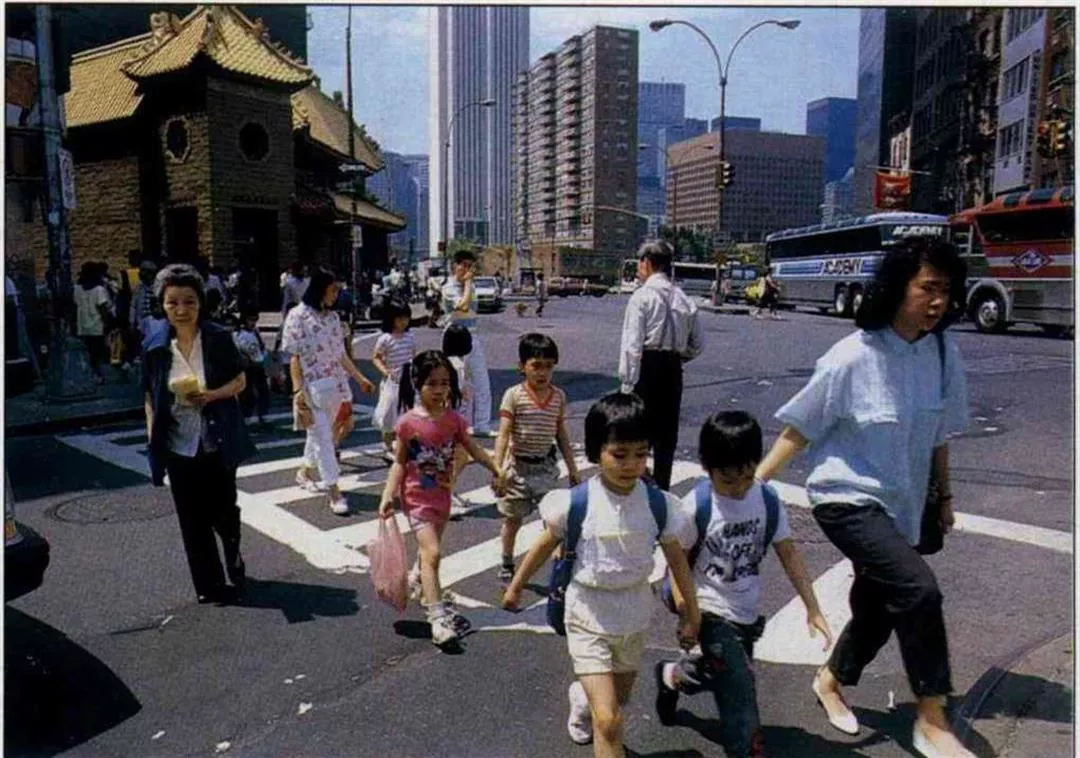
The Lower East Side, which is adjacent to major New York commercial districts, is undergoing a major change. (photo by Arthur Cheng)
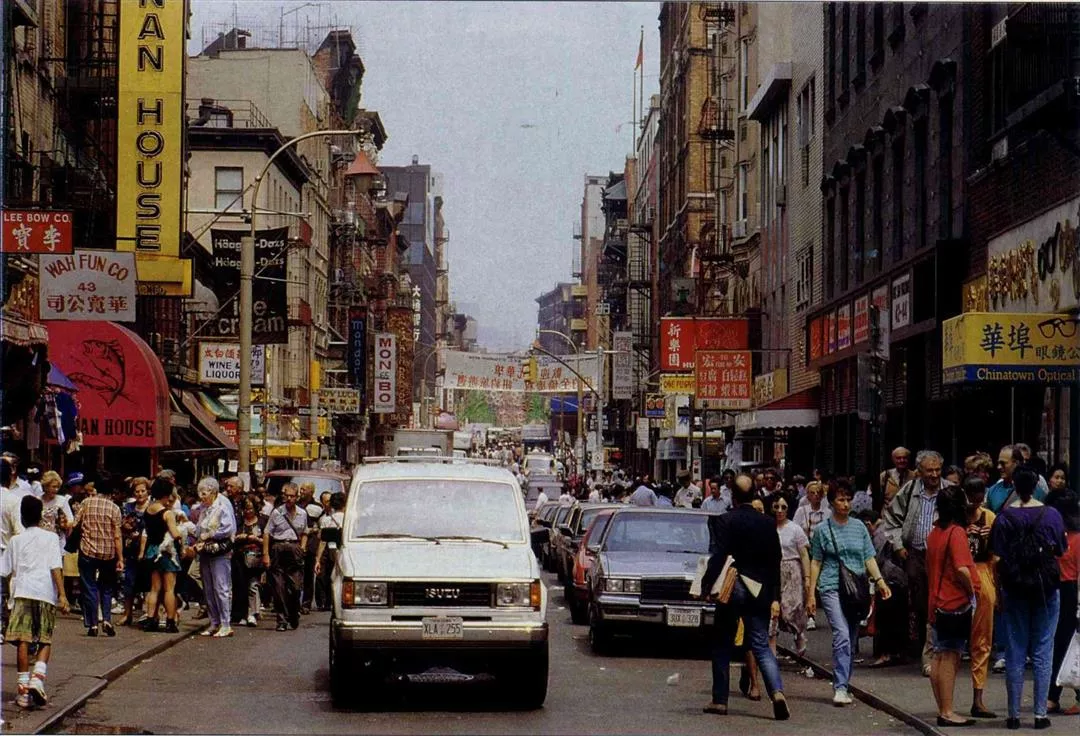
Many travel handbooks make the Lower East Side Chinatown an important stopover. Visitors here can eat delicious Chinese food and absorb real Chinese ambience.
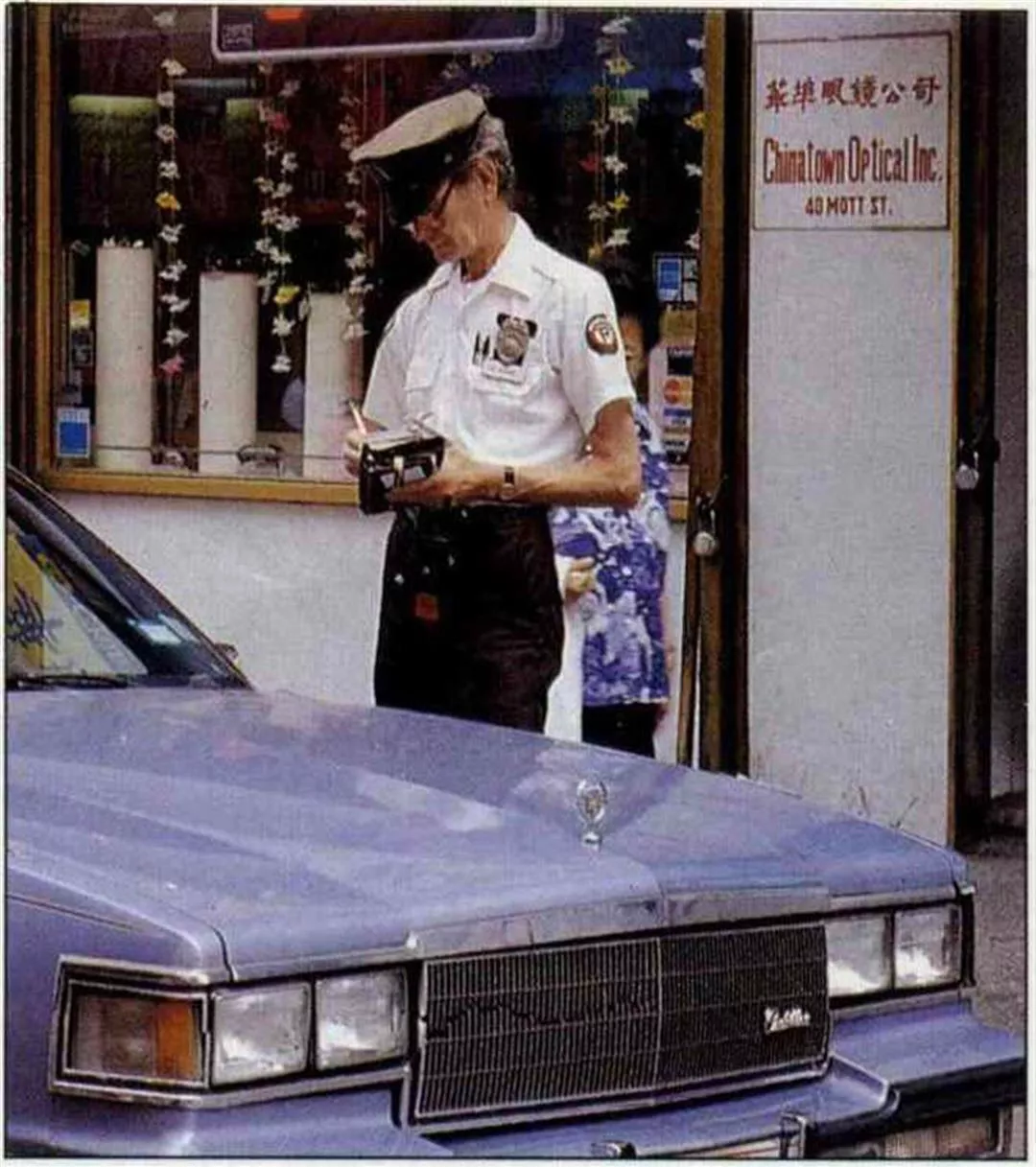
The old streets of Chinatown are narrow, and parking and driving are both major headaches, so getting ticketed is common.
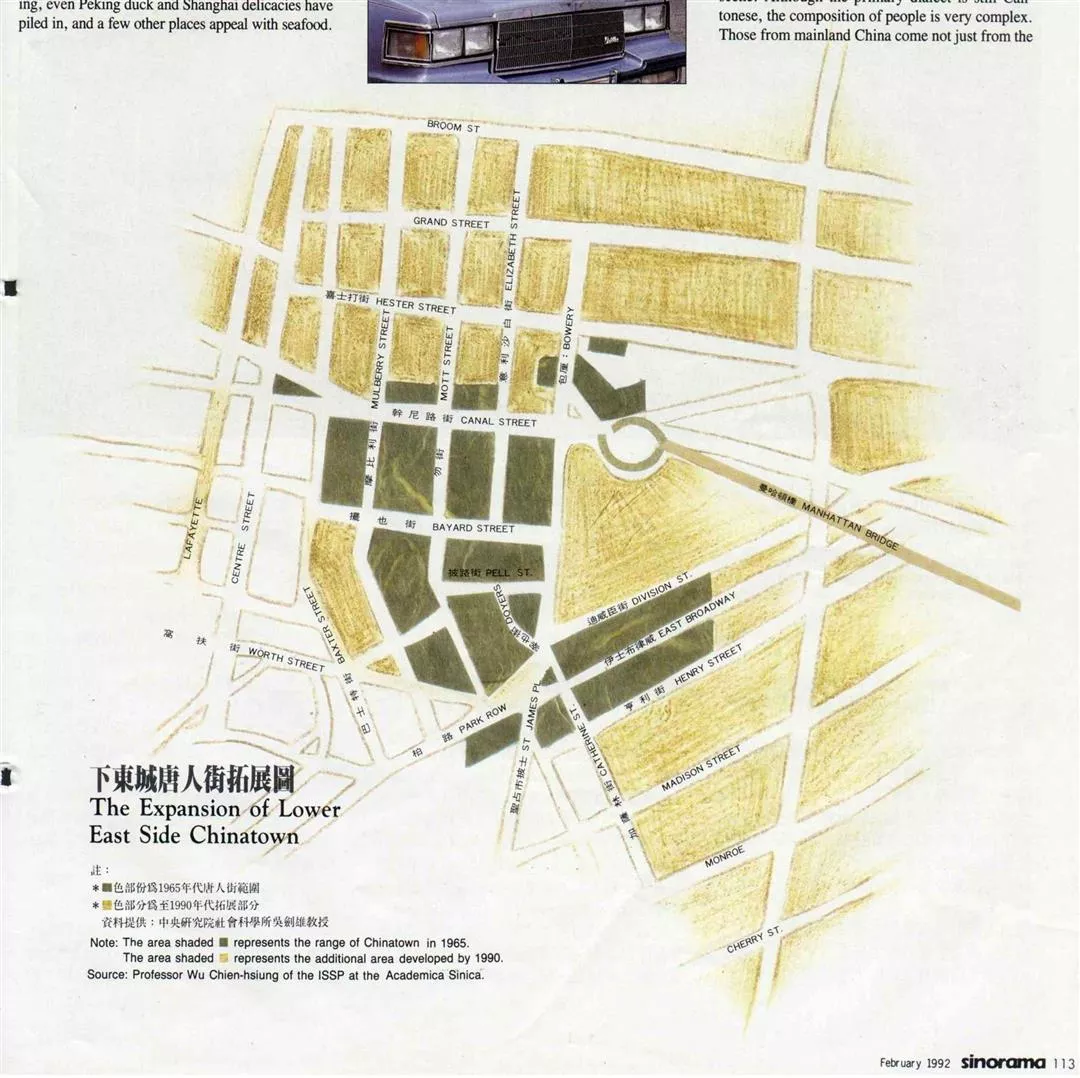
The Expansion of Lower East Side Chinatown Note: The area shaded represents the range of Chinatown in 1965. The area shaded represents the additional area developed by 1990. Source: Professor Wu Chien-hsiung of the ISSP at the Academica Sinica. [Picture].
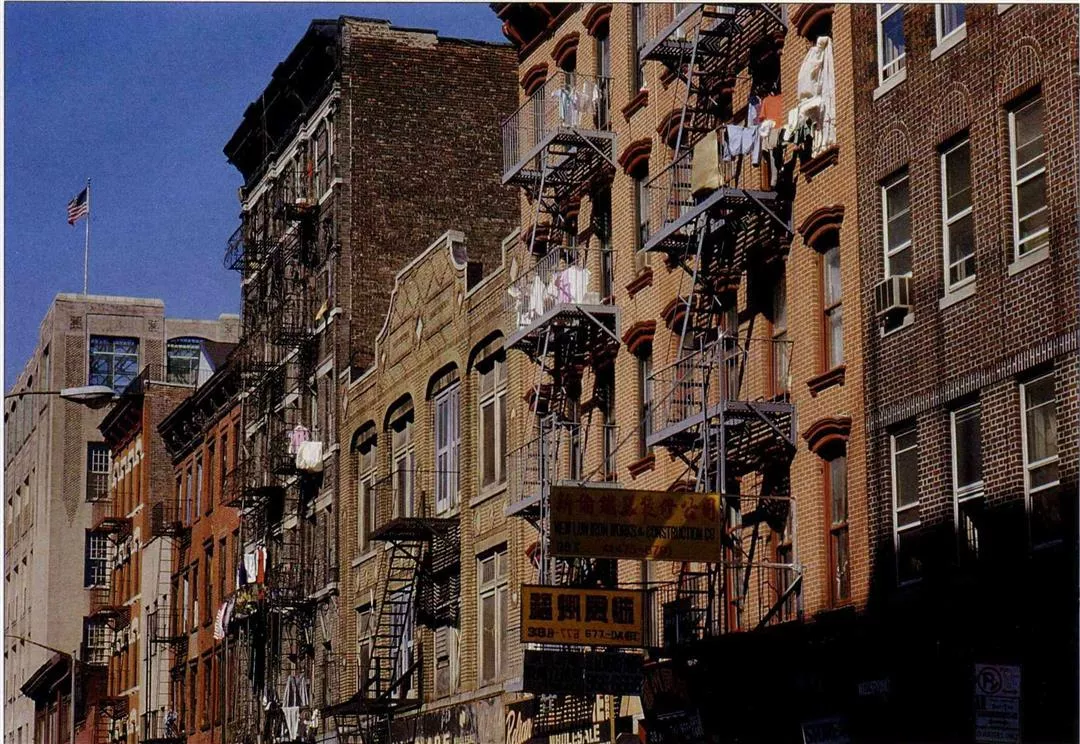
The view of the residences in Chinatown is less than pleasing to the eye; because of high rents, many shops have moved here from the commercial streets.
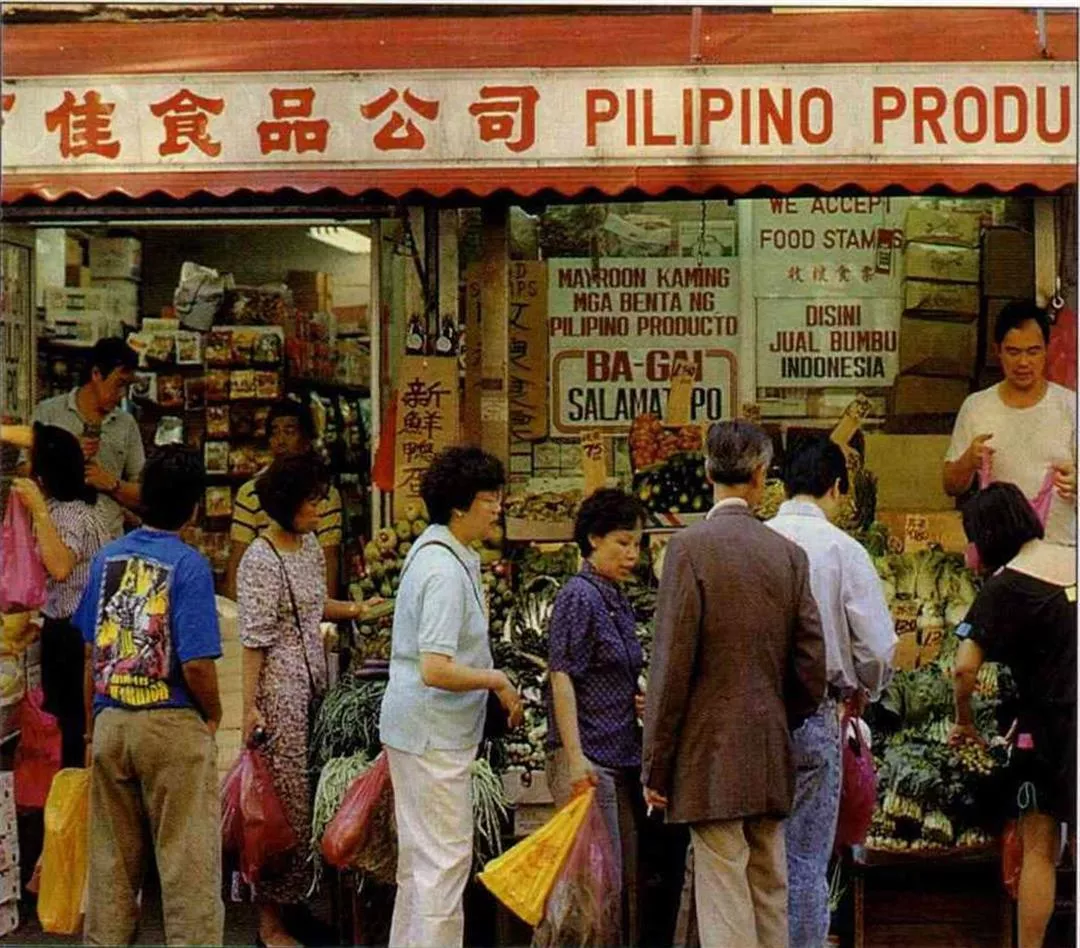
A sidewalk covered with vendors is classic Chinatown.
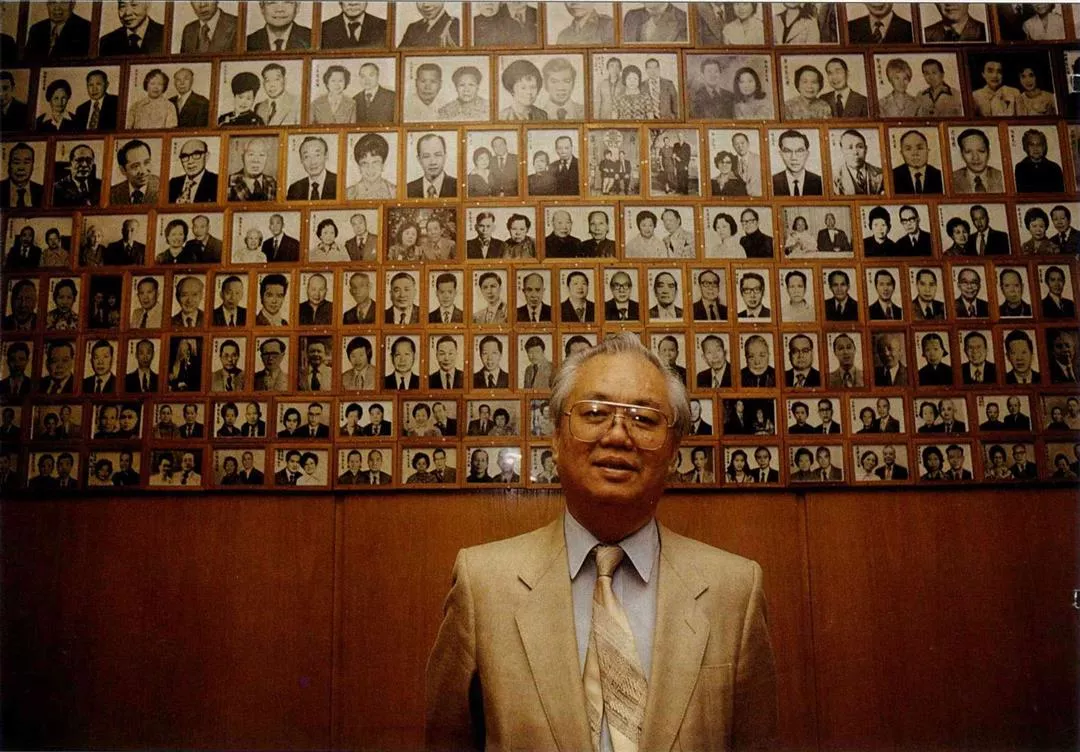
Li Wen-pin, chairman of the Li clan, was a famous general in the war against Japan. At the time of the September 18 incident he called on Chinatown Chinese to contribute a great deal of money to the mother country.
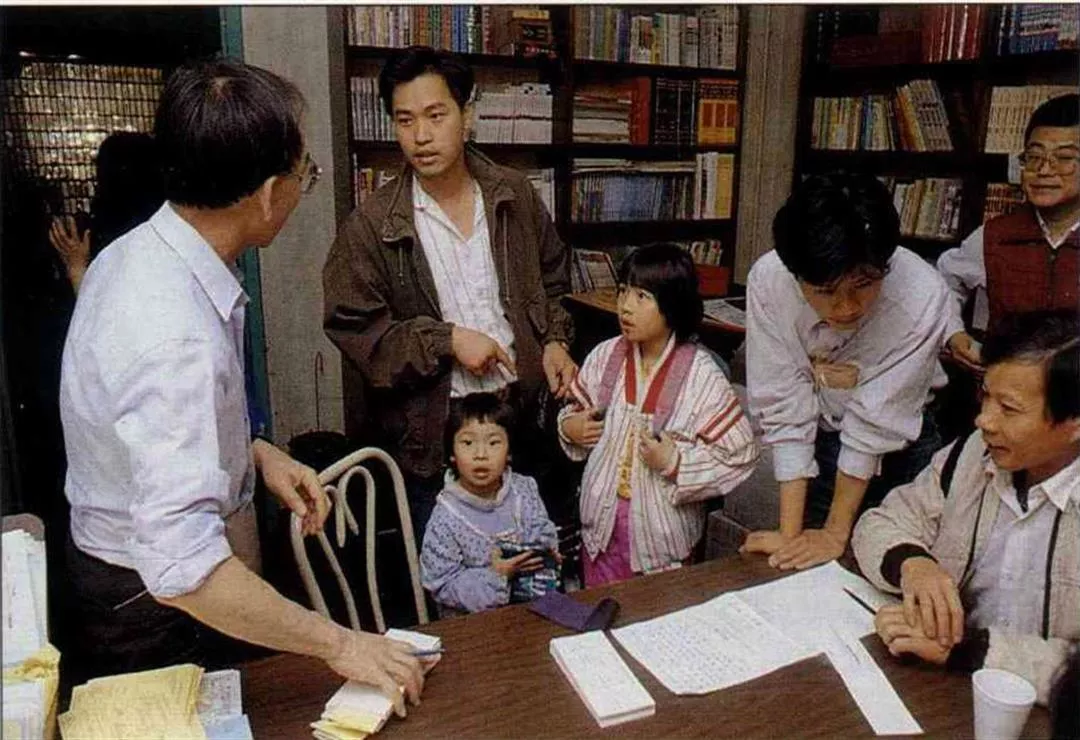
On the first day of school at the Overseas Chinese School in the Lower East Side, many new immigrants bring their kids to enroll.
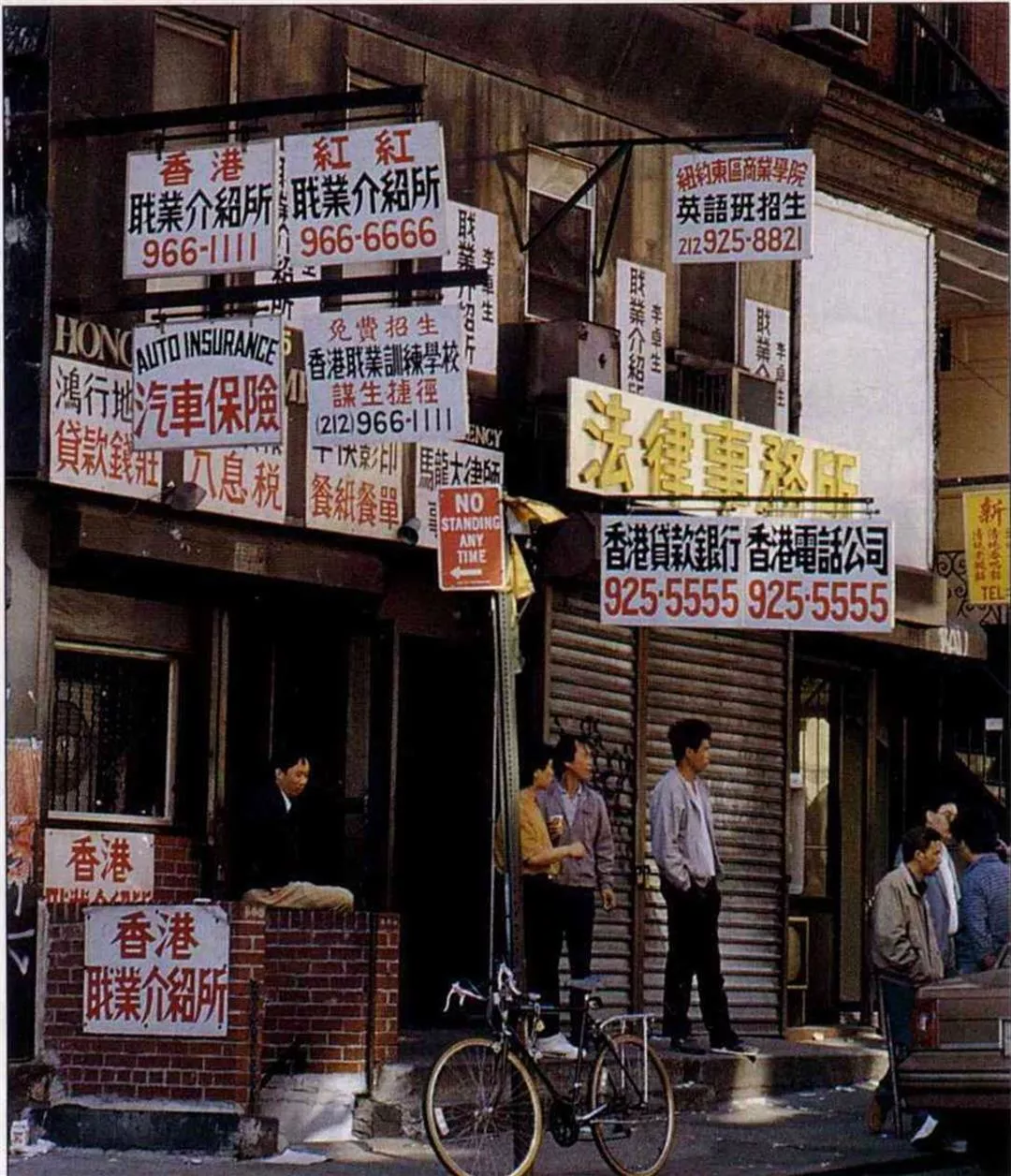
After 1979, the number of immigrants from mainland China increased greatly, bringing prosperity to the immigration-related enterprises in Chinatown.
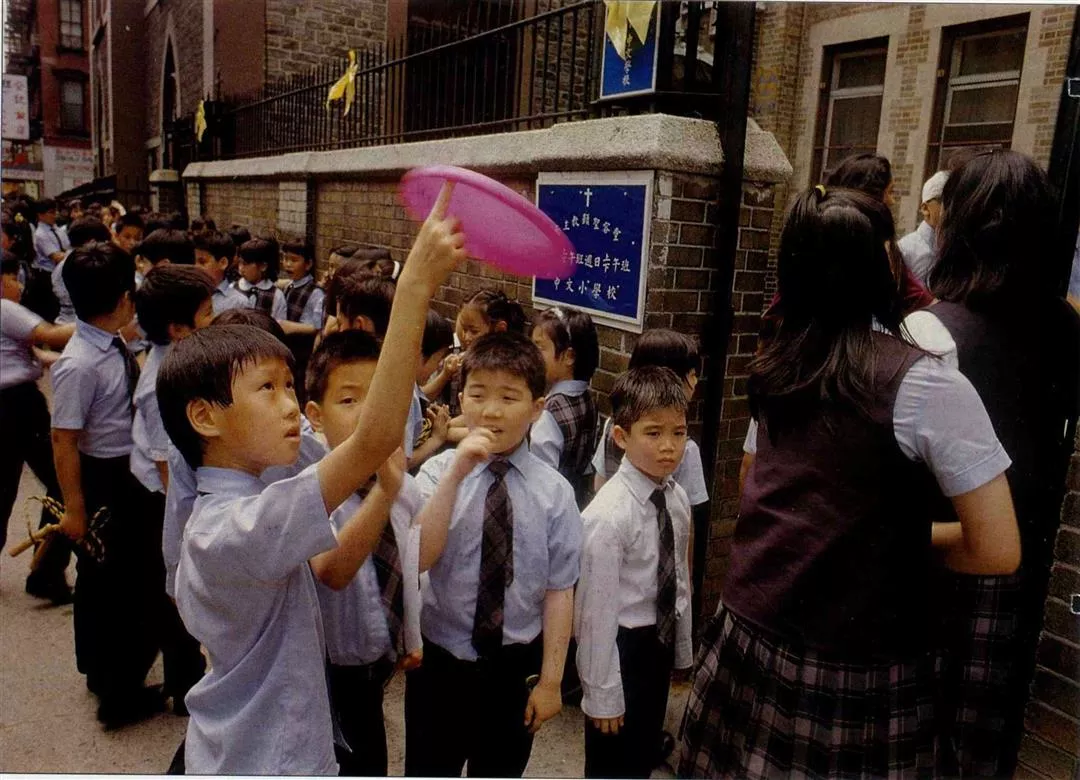
There are more than ten Chinese language primary schools in the Lower East Side.
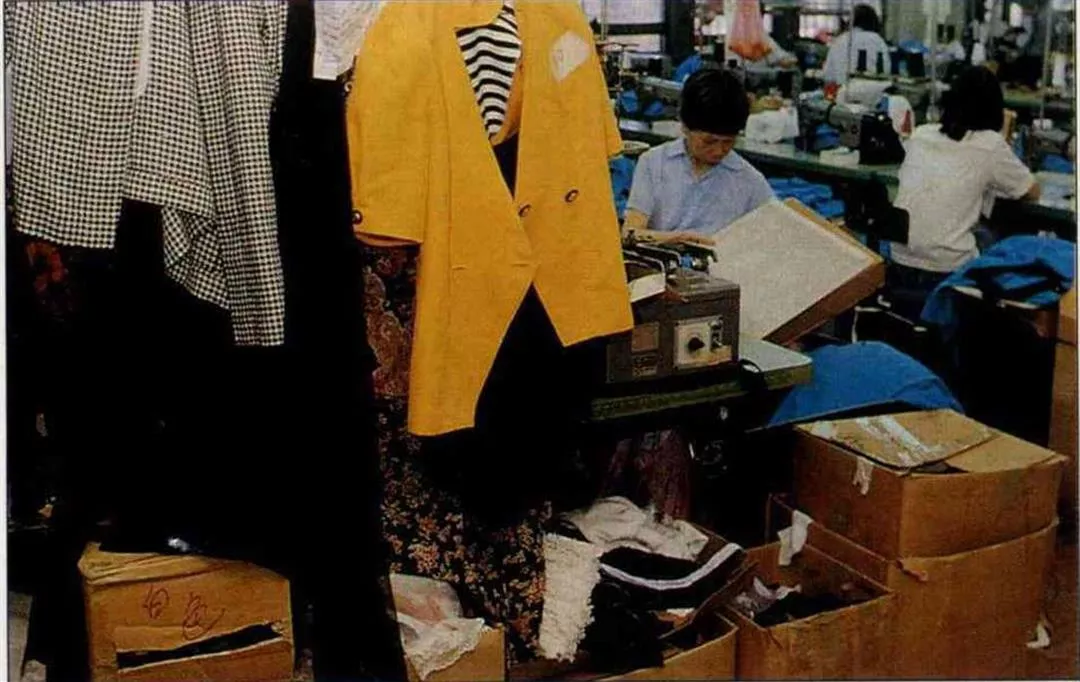
The garment making industry, a backbone of Chinatown, is facing severe difficulties.
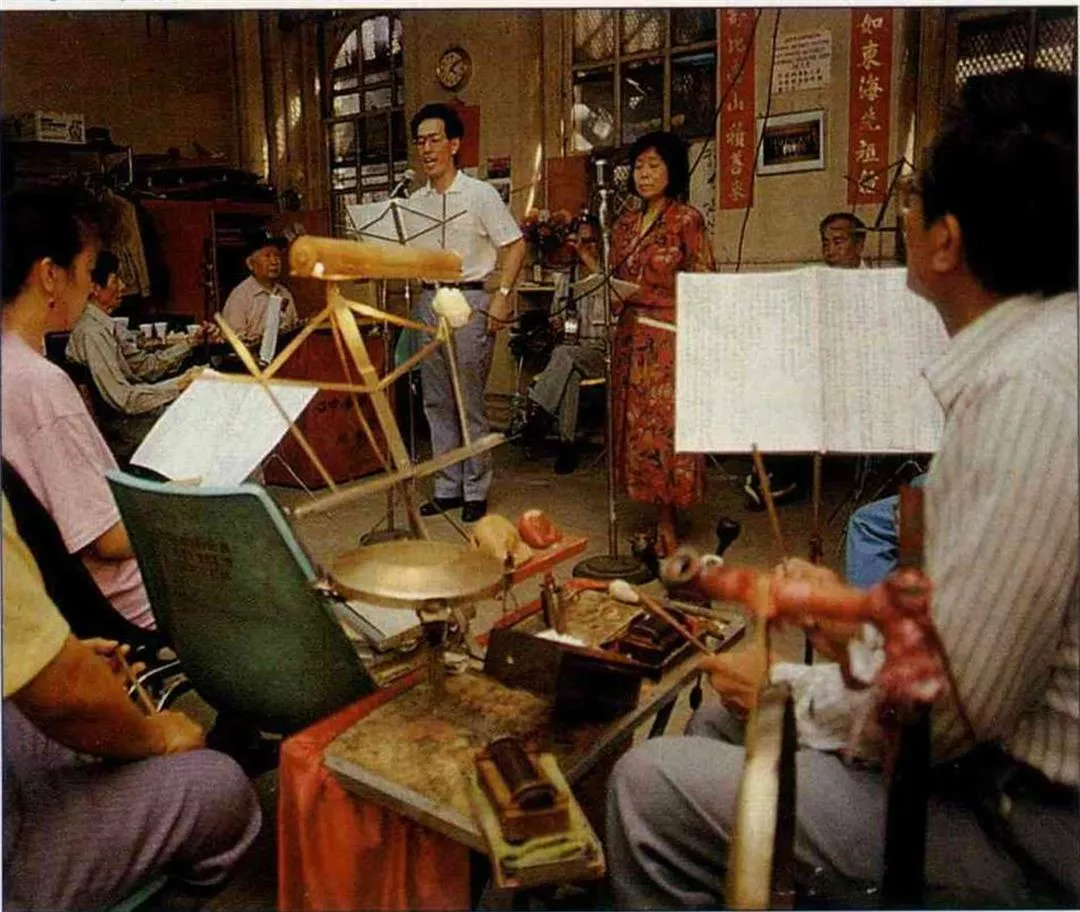
In the Senior Citizens' Center, lovers of Peking Opera come here every day to pass the time.
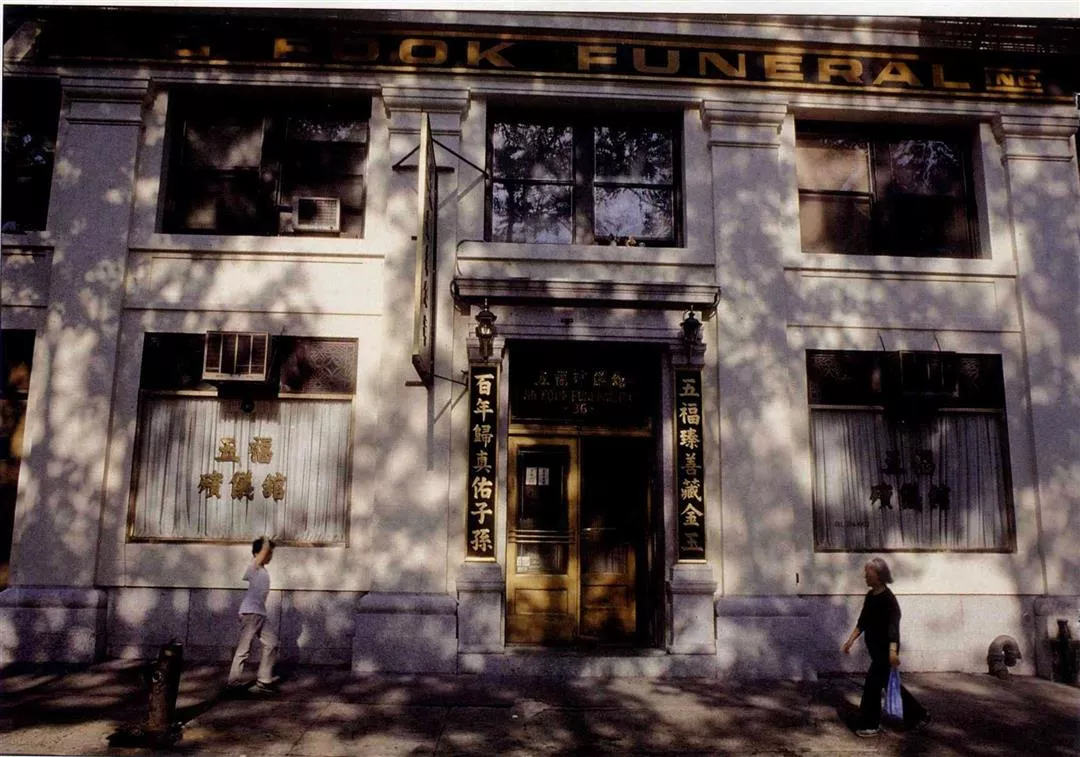
A Chinese funeral home sits on the edge of Columbus Park.